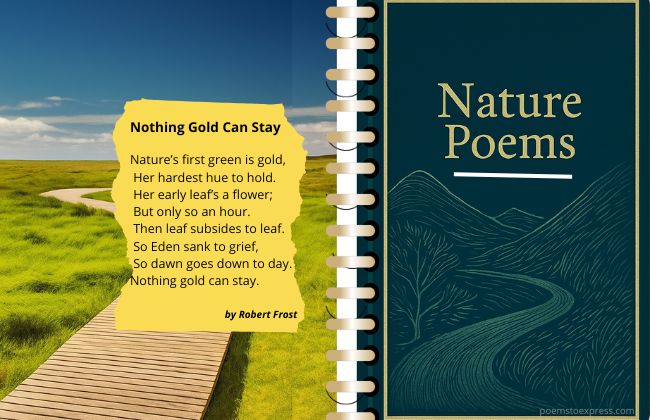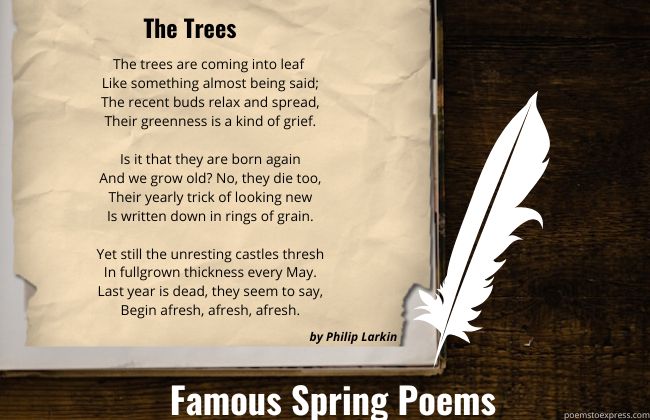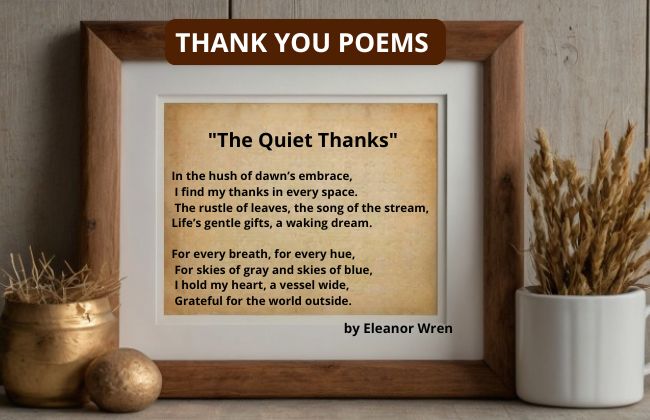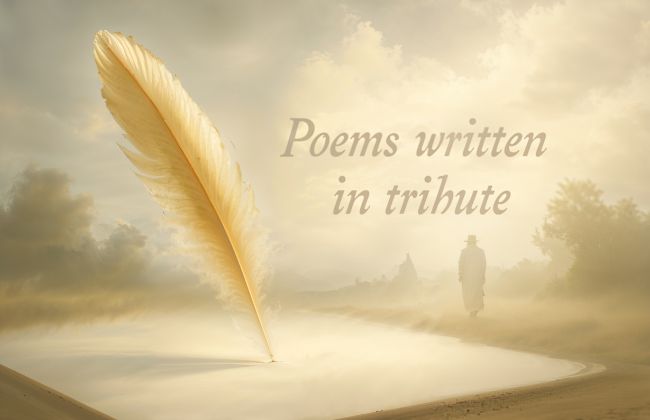Mary Oliver is recognized as one of the most influential poets of the 20th century. Her legacy spans through a body of work that captivates readers with its profound wisdom and timeless perspectives.

Her poems frequently explore nature, spirituality, and the human experience, distinguished by a distinctive style and evocative imagery.
Among her most celebrated compositions are “The Summer Day,” “Wild Geese,” and “When Death Comes.” These poems transform the everyday into the extraordinary, inviting reflection on the beauty and mystery of the world.
Both longtime admirers and new readers will find in her work a unique opportunity to explore the themes Mary Oliver addressed throughout her career.
We invite you to discover why her work continues to be a source of inspiration and wonder.
Table of Contents
The 10 best poems by Mary Oliver you must know
1. Wild Geese
“Wild Geese” explores the connection between humans and nature, and personal acceptance.
Oliver begins with a direct call to the reader, debunking the need to be perfect or extraordinary to find one’s place in the world.
The poem emphasizes that the natural world does not demand despair or regret. Instead, it offers a comforting vision that each person is part of a larger whole, symbolized by the image of wild geese flying home.
With a reassuring tone and an invitation to return to the simplicity of nature, Oliver encourages the reader to reconnect with the natural world as a source of inspiration and belonging.
2. The Summer Day
The poem reflects on the wonder and beauty of everyday life, especially through observing nature.
It begins with questions about the creation of the world and the creatures that inhabit it, such as the swan, the black bear, and specifically, a grasshopper. Oliver details the meticulous observation of a grasshopper, symbolizing a deep and mindful appreciation of the present moment.
The poem culminates with an introspective and powerful question: “What do you plan to do with your one wild and precious life?” This question invites readers to consider how they are living their lives and to reflect on the importance of making the most of every moment.
Finally, Oliver suggests that true understanding and appreciation of life come from being present and connected with the natural world.
3. When Death Comes
This poem meditates on the inevitability of death and how this perspective can influence the way we live our lives.
Oliver addresses the theme of death not with fear, but with curiosity and acceptance, suggesting that awareness of death should motivate us to live fully and intensely.
In the poem, Oliver expresses her desire not to “simply have visited this world” when death comes, but to have experienced it deeply, with wonder and gratitude.
She uses vivid imagery and metaphors to convey the idea that life should be lived fully and with an appreciation for every moment.
4. Morning Poem
“Morning Poem” by Mary Oliver is a celebration of new beginnings and the beauty of dawn.
Through its verses, Oliver describes how each morning brings the opportunity for rebirth and starting anew, symbolizing hope and renewal.
The poem is divided into ten short stanzas, where the author uses vivid imagery of sunrise and nature to emphasize the daily miracle of a new day’s beginning.
It expresses deep optimism and a connection with the natural world, suggesting that each day is a fresh creation full of possibilities.
The dawn light becomes a symbol of clarity and hope, reminding us that there is always a chance to find beauty and joy in everyday life.
5. A Thousand Mornings
The poem explores themes of contemplation, nature, and the search for meaning in everyday life.
In this poem, Oliver describes how each morning offers a new opportunity to observe and connect with the natural world. She uses images of nature, such as the ocean and birds, to illustrate the beauty and serenity that can be found in the simple moments of dawn.
The work reflects a meditation on repetition and renewal, suggesting that there is deep value in daily routines and in appreciating the small details that are often overlooked.
6. In Blackwater Woods
The poem explores themes of loss, love, and the impermanence of life, using nature as a framework for these reflections.
The poem begins with a vivid description of the Blackwater forest, where trees transform and the landscape changes, suggesting the constant evolution and cycle of life and death in nature.
Oliver uses the image of a forest fire to symbolize destruction and renewal, highlighting how nature can be both beautiful and devastating.
As the poem progresses, it becomes a meditation on how humans must learn to let go and accept the transience of life.
In the final stanzas, Oliver offers a profound reflection on love, loss, and the need to live fully.
7. The Journey
“The Journey” is a poem about the importance of taking control of one’s own life and leaving behind negative influences.
Through introspective narrative, Oliver describes the pivotal moment when a person decides to change their life, despite difficulties and external voices trying to stop them.
The poem uses the metaphor of a journey to symbolize the process of self-discovery and personal transformation.
Oliver highlights the courage required to break from the past and others’ expectations, emphasizing the importance of self-confidence and resilience in pursuing an authentic and meaningful life.
8. Sleeping in the Forest
“Sleeping in the Forest” is a poem that explores the deep connection between humans and nature.
The poem begins with the description of lying down on the forest floor, where the author feels embraced by the earth and surrounded by wildlife.
As the night progresses, Oliver describes feeling part of the cycle of nature, experiencing a sense of dissolution of self and connection with something greater.
The repetition of natural imagery, such as trees and water, reinforces the idea that nature is a refuge and a source of comfort and renewal.
The author also touches on themes of introspection and self-discovery, suggesting that by being in contact with nature, one can find a deeper understanding of oneself and the world.
9. The Swan
“The Swan” by Mary Oliver is a poem that explores the beauty and grace of a swan as it glides through the water, using this image to reflect on the wonder and mystery of nature.
Through the observation of the swan, Oliver invites readers to consider the purpose of beauty in the world and how it can offer a sense of comfort and hope.
The swan becomes a symbol of purity and serenity, representing the possibility of finding moments of stillness and reflection amidst everyday life.
Oliver suggests that, like the swan, humans can find beauty and meaning by accepting and adapting to the changes in their lives.
10. Dogfish
The poem “Dogfish” is a profound exploration of resilience and persistence in the face of adversity and loneliness.
The poem begins with a vivid description of the dogfish, a type of small shark, portrayed as a creature both relaxed and formidable, symbolizing nature’s duality as something that can be both beautiful and dangerous.
As the poem progresses, Oliver uses the figure of the dogfish to contemplate broader themes such as resilience and determination.
The dogfish, with its constant movement and hunting instinct, represents the need to keep moving forward despite adversity.
The author also introduces a reflection on the human condition, suggesting that, like the dogfish, people must confront their challenges with bravery and persistence.
Biography of Mary Oliver
Mary Oliver was a renowned American poet whose work drew deep inspiration from nature and explored the intricate bond between the natural world and humanity.
With numerous awards and a distinct style, her influence on American poetry is profound.
Early Life
Mary Oliver was born on September 10, 1935, in Maple Heights, Ohio. From an early age, she found solace in nature and writing, which became lifelong passions.
Oliver attended both Ohio State University and Vassar College, although she did not receive a degree from either institution.
Her formative years were marked by solitary walks in the woods which influenced her future works.
Career and Achievements
Oliver’s career was both prolific and distinguished. Her first collection of poems, “No Voyage and Other Poems,” was published when she was 28.
However, it was her fifth book, “American Primitive,” that won her the Pulitzer Prize in 1984. Oliver’s accolades also include the National Book Award for “New and Selected Poems” in 1992.
She held the Catharine Osgood Foster Chair for Distinguished Teaching at Bennington College and was esteemed for her readings and workshops, which drew attendees from all walks of life.
Literary Style
Oliver’s literary style is characterized by its simplicity, attention to detail, and lyrical quality. Her work often explored themes of nature, spiritual inquiry, and the journey of self-discovery.
Oliver’s use of rich imagery and accessible language invited readers to appreciate the beauty and lessons inherent in the natural world.
She had a unique ability to capture the profound within the everyday, creating poems that resonated with a broad audience.
Themes in Mary Oliver’s Poetry
Nature
In Oliver’s work, nature is a central motif used to explore life’s beauty and mysteries. Her poems frequently feature wildlife, landscapes, and floral imagery to reflect on existence.
For instance, in the poem “Wild Geese,” she invokes the image of geese soaring in the sky to remind readers of their place in the world.
Nature is not just a backdrop but a dynamic participant in her poetry, offering lessons and metaphors for living.
- Key features in her nature-themed poetry:
- Attention to detail
- Use of nature as an allegory for life
- A celebration of the natural world’s cycles
Spirituality
Oliver’s poetic lens often reflects a spiritual quest for understanding one’s purpose and connection to the universe.
She addresses the divine without specific dogmatic references, aiming to transcend traditional religious boundaries. Her work “Praying” is less about the act in a religious sense and more about the meditation and mindfulness present in experiencing the world with gratitude and openness.
- Elements of spirituality in her poems:
- Quest for meaning
- Gratitude and mindfulness
- Connection with the transcendent
Human Experience
Oliver’s treatment of the human experience is grounded in reflection and a keen observation of life’s ephemerality.
The theme is especially evident in the poem “The Chance To Love Everything,” which discusses the ability to embrace life in all its fullness. By recognizing the fleeting nature of life, her poetry resonates with themes of growth, mortality, and the richness of human emotions.
- Aspects of human experience in her poetry:
- Reflection on life and death
- Celebration of love and relationships
- Embrace of personal growth and change
You might also like:






